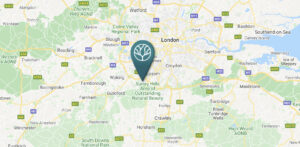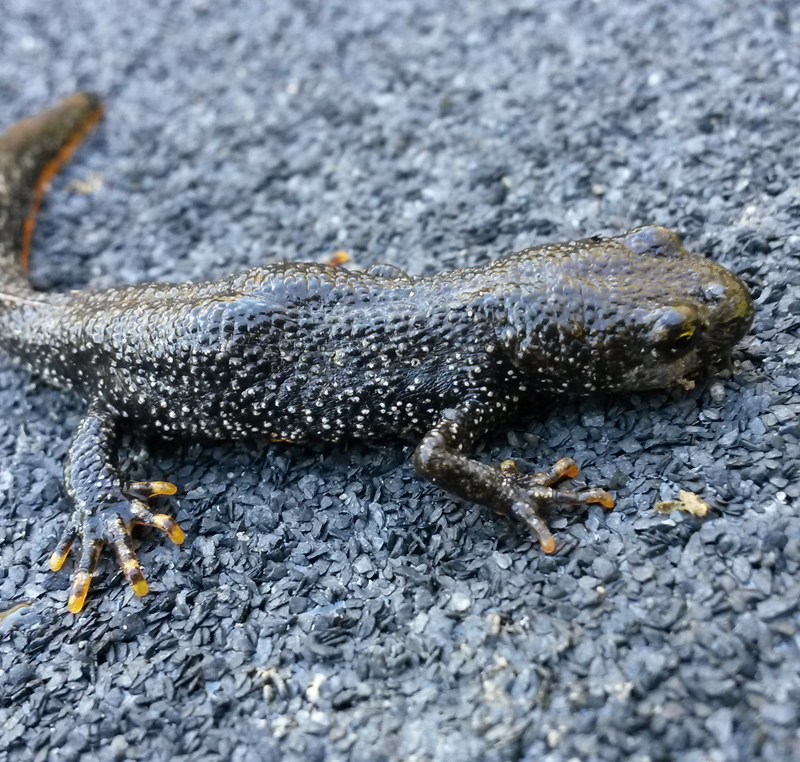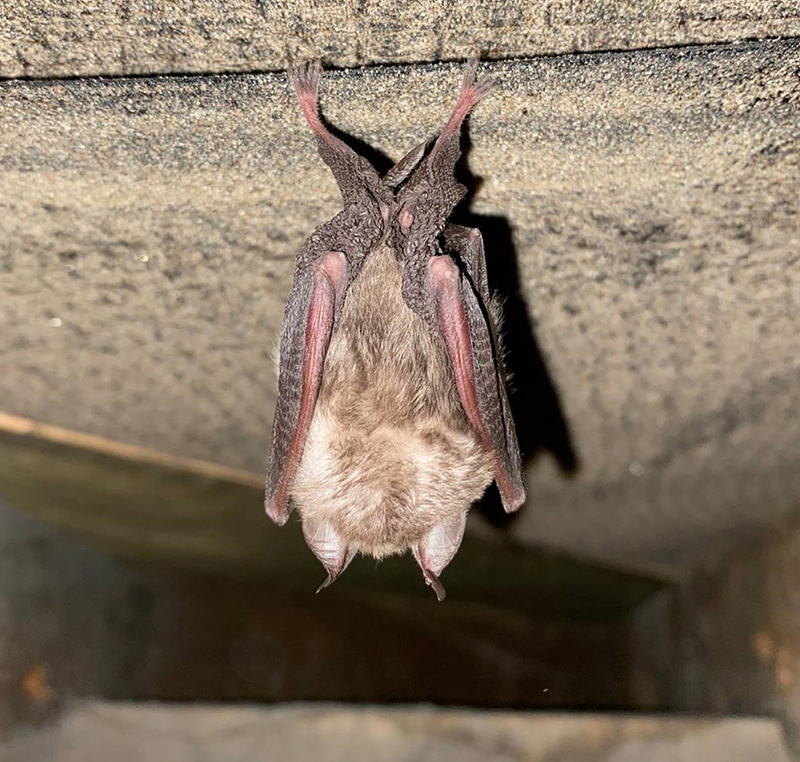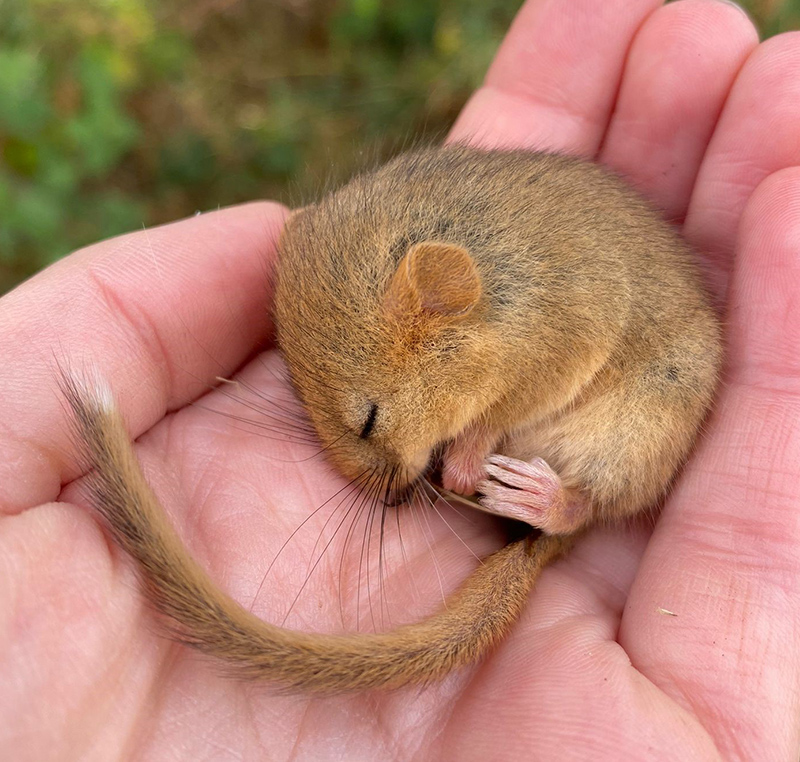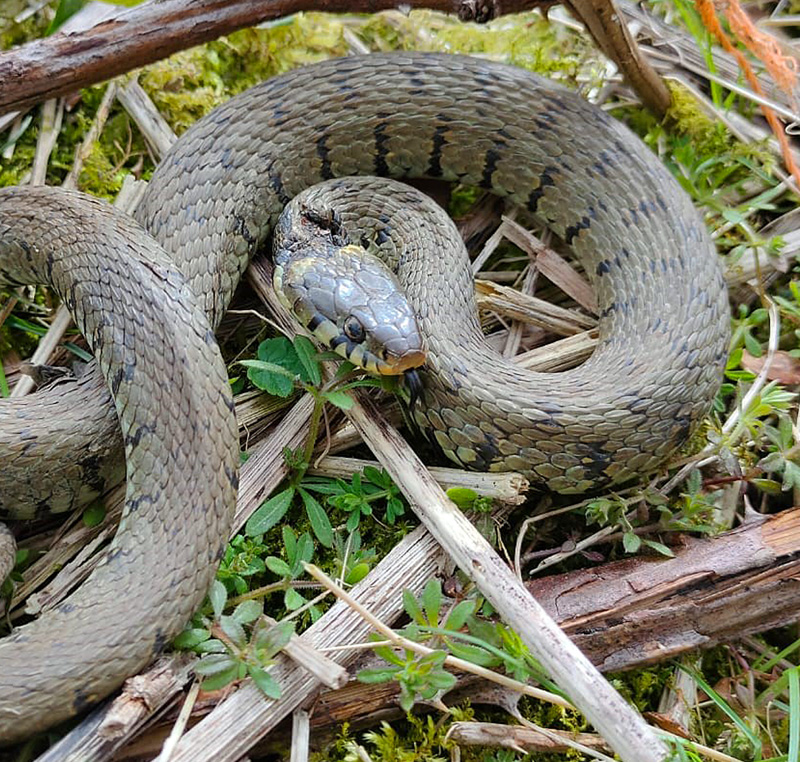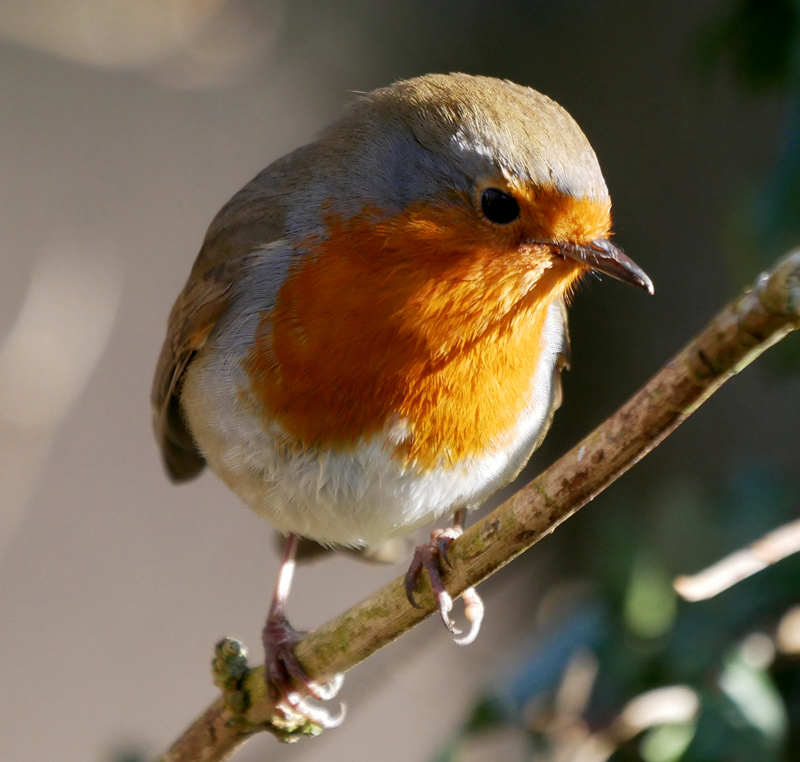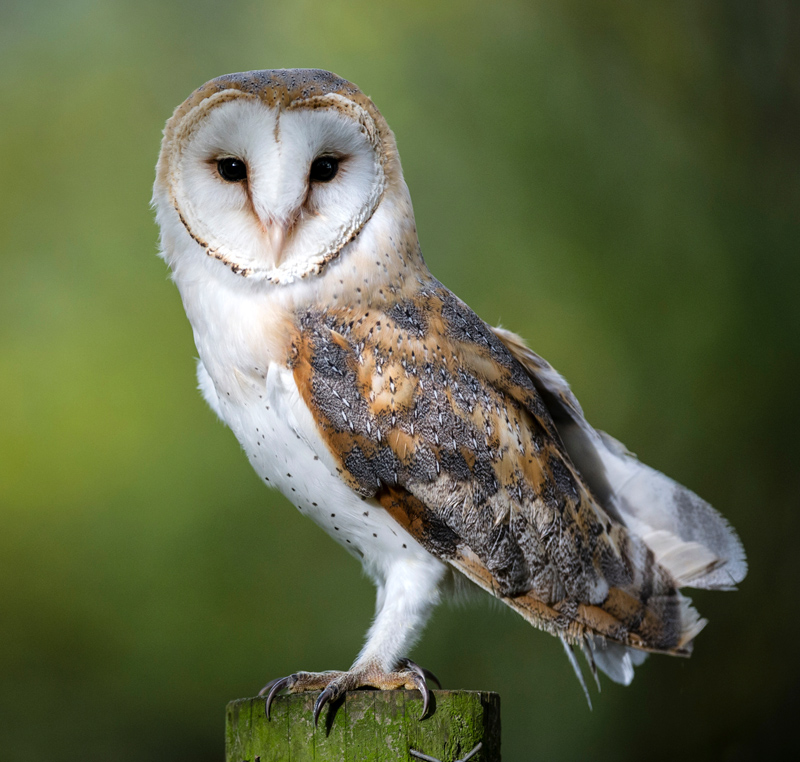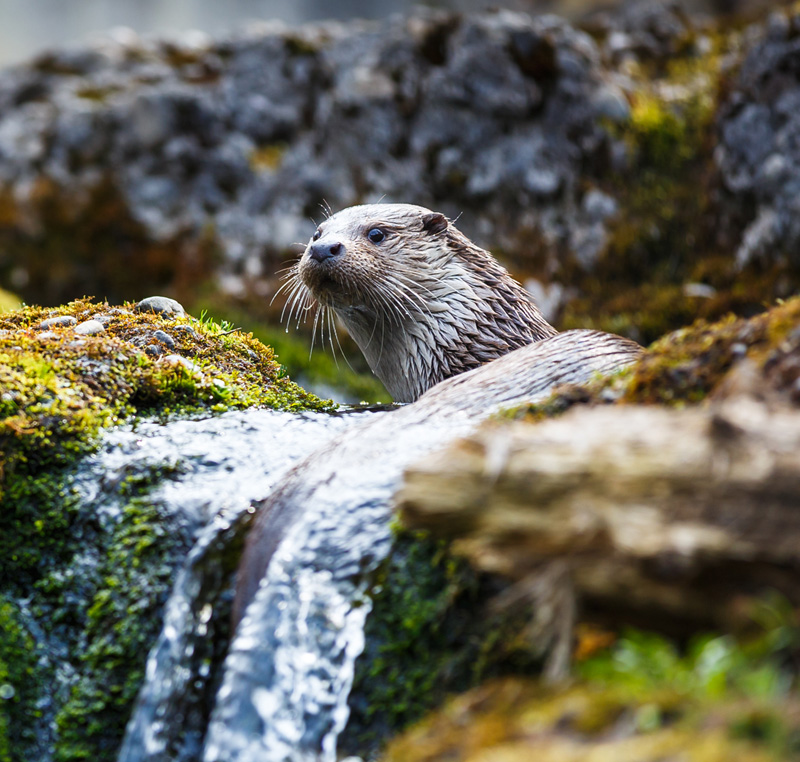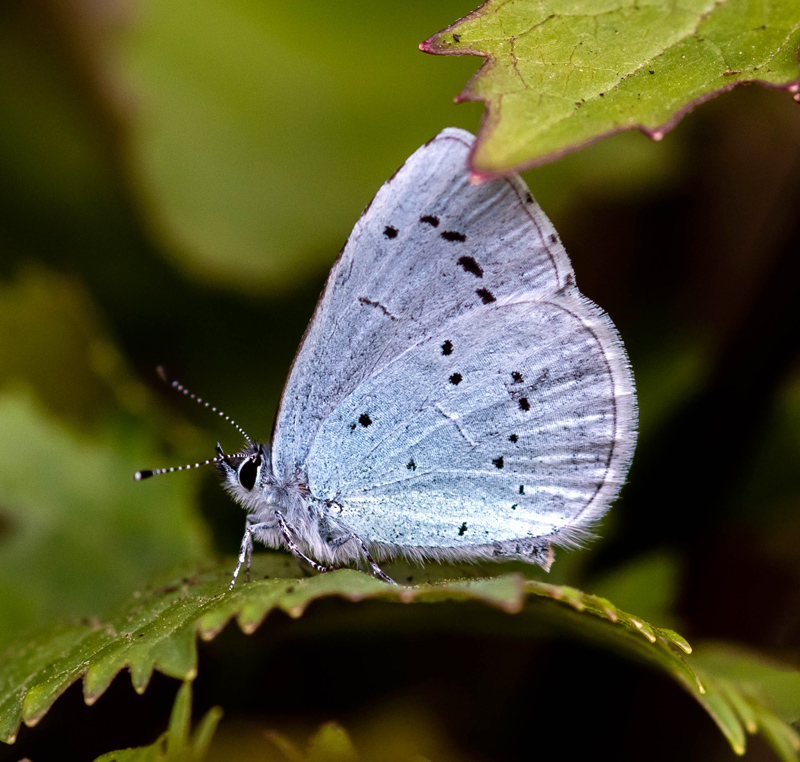Great crested newts (GCNs)
Legal Protection
All life stages of great crested newts are fully protected under UK and EU law, making it an offence to kill, injure, capture, disturb or sell them, or to damage or destroy their habitats. More specifically, this species is protected under the Wildlife and Countryside Act, 1981 and under the Conservation of Habitats and Species Regulations 2017. In addition, great crested newt is listed as a Species of Principal Importance under the provisions of the NERC Act 2006.
Surveys...
Desk-based assessments and on the ground surveys are used to identify ponds which have potential to be impacted by the scheme/works. Following this, and where access is available, ponds may be further assessed using Habitat Suitability Index (HSI) criteria in order to determine their suitability for the species.
Depending on the suitability of identified ponds, their proximity to the site, presence of barriers to dispersal and suitable on and off-site terrestrial habitat, further, more detailed surveys may be completed in order to confirm presence/likely absence of GCNs within ponds and estimate population sizes. Presence/likely absence may be determined using environmental DNA (eDNA) testing of pond water in a laboratory for GCN DNA. In accordance with best practice guidelines, this type of survey may only be completed between 15th April and 30th June in any given year and if presence is confirmed, more detailed population surveys may be required to support planning.
Presence/likely absence may also be determined through a range of survey techniques, such as bottle trapping, egg searching, torch surveys and/or netting. In order to comply with best practice, surveys must be completed during suitable weather conditions with at least three different survey methods used during each of four separate pond visits. At least two of these survey visits must be completed between Mid – April and Mid – May. If GCN presence is confirmed, a further two survey visits will be required to estimate population.
The Ecology Partnership has licensed GCN survey workers (Natural England licence) to allow individuals to undertake GCN surveys.
Mitigation...
Where impacts cannot be avoided and a development licence is required for the scheme, for example due to the loss of a breeding pond or loss of suitable terrestrial habitat, then The Ecology Partnership can prepare the licence application on the client’s behalf. Either the standard Natural England European Protected Species (EPSL) approach to licencing may be taken or, depending on where the site is located, a District Level Licence (DLL) may be applied for. The Ecology Partnership can provide advice and guidance on the most suitable and appropriate licencing route to take.
The type and level of mitigation required for a scheme is dependent on a number of factors, such as the licencing route taken, as well as the nature and extent of the proposals, habitat suitability and proximity of ponds etc. Mitigation may involve installation of exclusion fencing and translocation using pitfall trapping, hand searches and destructive searches, alongside enhancements which may involve creation of artificial refugia/hibernacula, creation/enhancement of ponds and creation/strengthening of terrestrial habitat corridors.
If you require more information on these assessment or further ecological consultancy, please call us or email us.
01372 364 133
info@ecologypartnership.com
Follow us
The dormouse is home!
Found and rehomed under licence #bats #longears #lovebats
Last #bat #survey of the year!
Autumn colours!
Meeting the locals #surveying
Sunset bat surveys #views #bats
Enjoying the autumn sunshine! #surveying
Surveying fleabane! #surveys #yellow
Gloworm #magic on last nights bat survey #invertebrates #survey
Moomin adventures #travel #moomins
#lifegoals #moomins @MoominOfficial
Slo-mo bat in flight captured by the team! Brilliant batting! #bats #surveying
Found another! #moomin
Moomin tastic! #moomins @moominmuseum @MoominOfficial magical!
Beautiful lines #Helsinki #library
Staff day out! #summer #fun
Someone is home!
Glow worm magic…
Dormice confirmed!
Stunning grass snake found today #reptiles #survey
So do I stay up and watch as much as I can? Or do I sleep now and set the alarm for 3.30 for the rush?
Another stag beetle! Saved from a footpath! #beetles
Bucket of lizards #reptiles
Evening #bat #survey
Building assessments are always interesting! #art #batsurvey
Calcareous grassland day! #surveys #grasslands
Dormouse training day! What wonderful creatures!
Bat survey visitor! #badger
Longhorn moth! Check out the huge antennae! #surveys #moths
Hello bats! Looks like brown long eared but droppings taken for DNA analysis #surveys #bats
